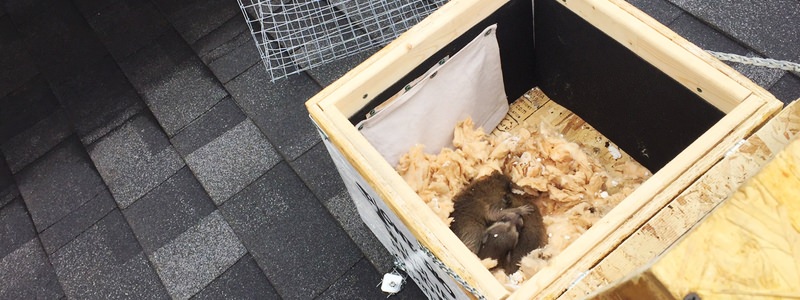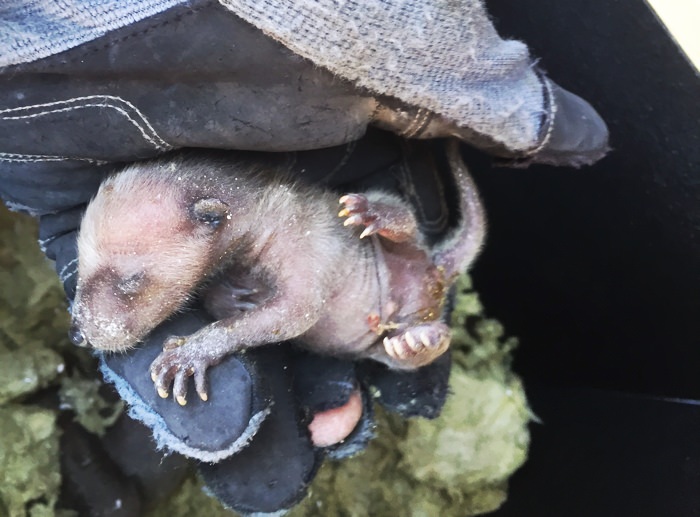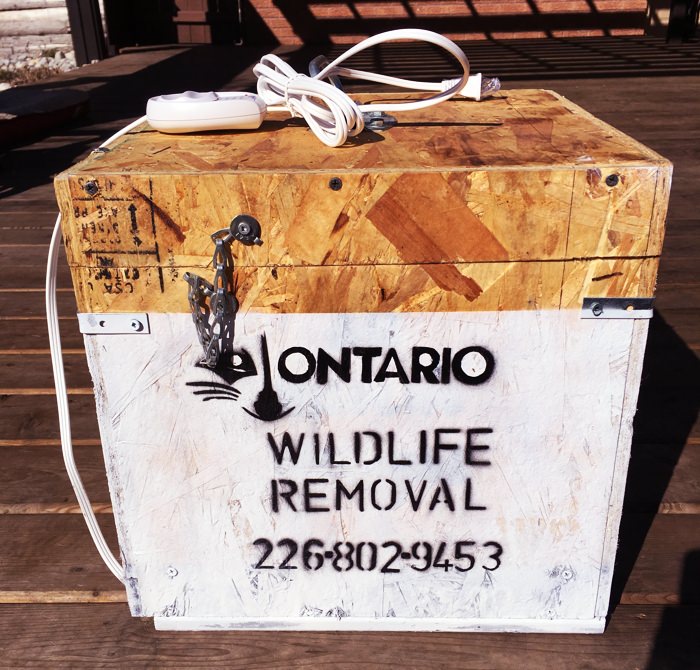
How Do We Handle Wildlife We Remove During Extremely Cold Temperatures
Posted by Jared Houliston Wednesday, February 28th, 2018 | 5,966 Reads
A common question we get from customers is regarding what we do with animals that we remove from homes during extremely cold temperatures, and especially during the deep cold of winter.
Even if wildlife are living in your attic, it only makes sense to wonder if during excessive temperatures, whether we simply release them back into the wild and let them fend for themselves or not. It’s normal to have these concerns but you can rest assured that we actually have a humane solution for dealing with wildlife during extremely cold weather and it doesn’t involve abandoning them in the snow.
 In the coming months it’s still going to be quite brisk outside; and we’ll be removing many baby raccoons and baby squirrels from people’s attics too, but what will we do with them if it’s too cold?
In the coming months it’s still going to be quite brisk outside; and we’ll be removing many baby raccoons and baby squirrels from people’s attics too, but what will we do with them if it’s too cold?
Are we going to release them into the bush and hope for the best?
Our procedures for removing wildlife during extreme temperatures
We do have a strict set of policies and procedures that we abide by when we remove wildlife during frigid weather. These policies are enacted depending on how severe the temperatures are, and we uphold them between the months of mid-October to mid-March or any other time it’s extremely cold outside.
When it’s freezing outside and there’s below 0 temperatures, each animal that is removed from a home is treated differently:
- Snakes: snakes are captured and kept in a warm box or other container and brought to a wildlife rehabilitation centre
- Bats: bats are treated like snakes and are brought to our local wildlife rehabilitation centre
- Squirrels: squirrels with babies are removed and the babies are placed in an insulated baby-warming box until their mother returns to relocate them to a new den site
- Raccoons: raccoons babies are removed and placed in our insulated baby-warming box until the mother finds and relocates them to a new den site
- Birds: birds removed from a home or attic are captured and let back into the wild immediately
- Mice: mice are quite strong and resilient creatures that have several shelters at once so they are captured and released outside during the winter without much concern for their survival
- Opossums: opossums are treated the same way as raccoons and squirrels are – they are released back into the wild
- Injured wildlife: any forms of injured wildlife we encounter are immediately brought to our local wildlife rehabilitation centre until they are able to fend for themselves
We bring all injured wildlife or wildlife that will not survive outside in the winter to Hobbitstee Wildlife Refuge. They’ll care for the animal until the winter is over, or until they’ve healed from their injuries.
Our most recent delivery to was a bat we removed from a youth centre in Brantford Ontario. The bat had found it’s way to the front lobby of the centre where someone found it and gave us a call to remove it. We did, and we’re thankful it’s being properly care for.
For a bat to be flying about in the winter is highly unusual and not a part of it’s natural behaviour. People rarely see bats in the winter unless there is a colony in their attic or nearby and the bat has been disturbed out of it’s hibernation. When this happens and a customer calls us, it would be highly inappropriate and against the law for us to remove the bat and release it back into the wild during the winter because it would definitely die within a few hours or less.
The video below will show you the current condition of the bat we removed in early February. It’s currently being gently cared for by our friends at Hobbitstee until it’s warm enough to be let back into the wild:
As you can see from the video, this little bat is doing fine. Once he’s about to be released back into the wild, Hobbitstee will probably post a video of the release on their Facebook page.
What you should do if there’s wildlife in your home during extreme weather?
 If you find any of the wildlife in the list above have come into your home’s common area, make sure you call your local pest control/wildlife removal company to have them removed and dealt with safely.
If you find any of the wildlife in the list above have come into your home’s common area, make sure you call your local pest control/wildlife removal company to have them removed and dealt with safely.
Before you do, make sure the company you choose follows the same set of procedures we’ve outlined above.
For raccoons and squirrels they should have strict procedures when dealing with the babies, and definitely have a warming box to contain them until they are retrieved by their mother. Ask them what their service procedures are for removing wildlife in the winter, and if they don’t add up to a humane solution, don’t use them.
We advise that you definitely do not kick them out because you could be putting them at risk of dying due to exposure to the elements.
What about during removals during extreme summer temperatures?
In the summer there isn’t much we can do other than provide the animals with water if it is apparent that they’re severely dehydrated. Almost all Canadian wildlife adapt quite easily to summer temperatures and know where to find shelter, food and water on their own.
Ontario Wildlife Removal Inc. provides wildlife removal and pest control in Southwestern Ontario, including Brantford, Kitchener-Waterloo, Cambridge, Guelph, London, Woodstock, Tillsonburg, Simcoe, Port Dover, Paris, St. George, Six Nations, Caledonia, Burlington, Waterdown, Oakville, Hamilton, Stoney Creek, Grimsby, & Niagara Region. Our methods are safe, humane and environmentally friendly. Call today to book your inspection.
Get a Pest Control Quote
Simply fill in your details below and we'll call you very shortly to discuss your issues.





Leave a Reply